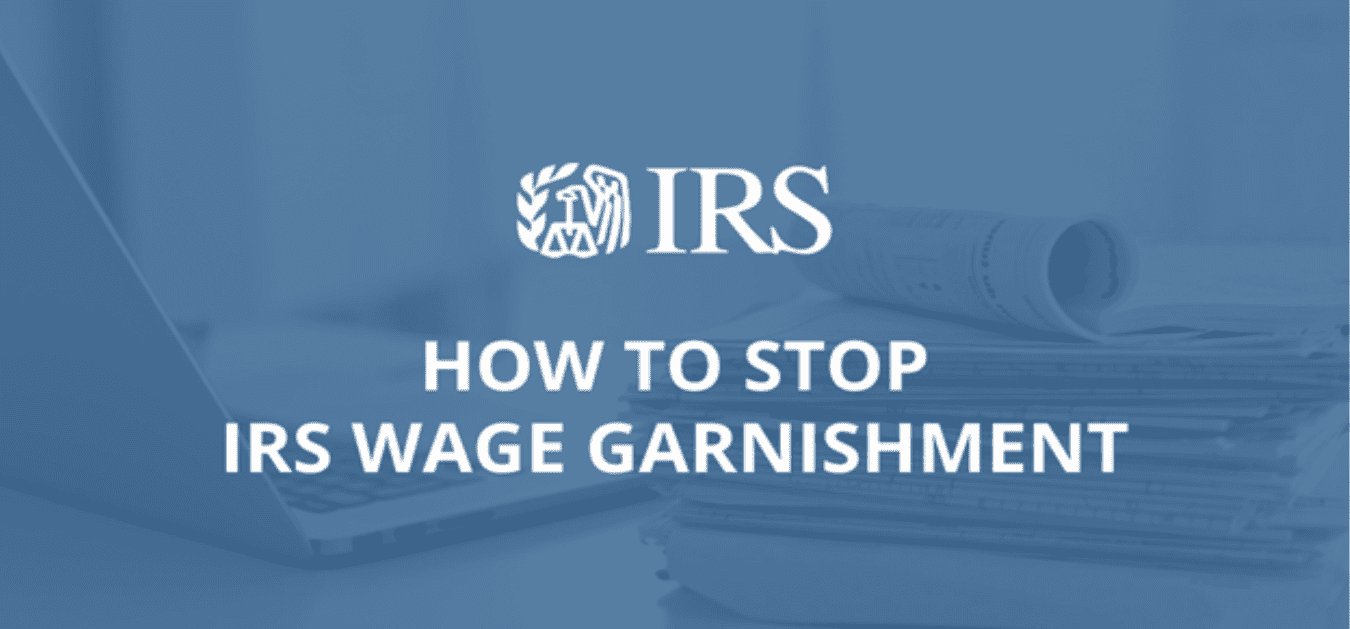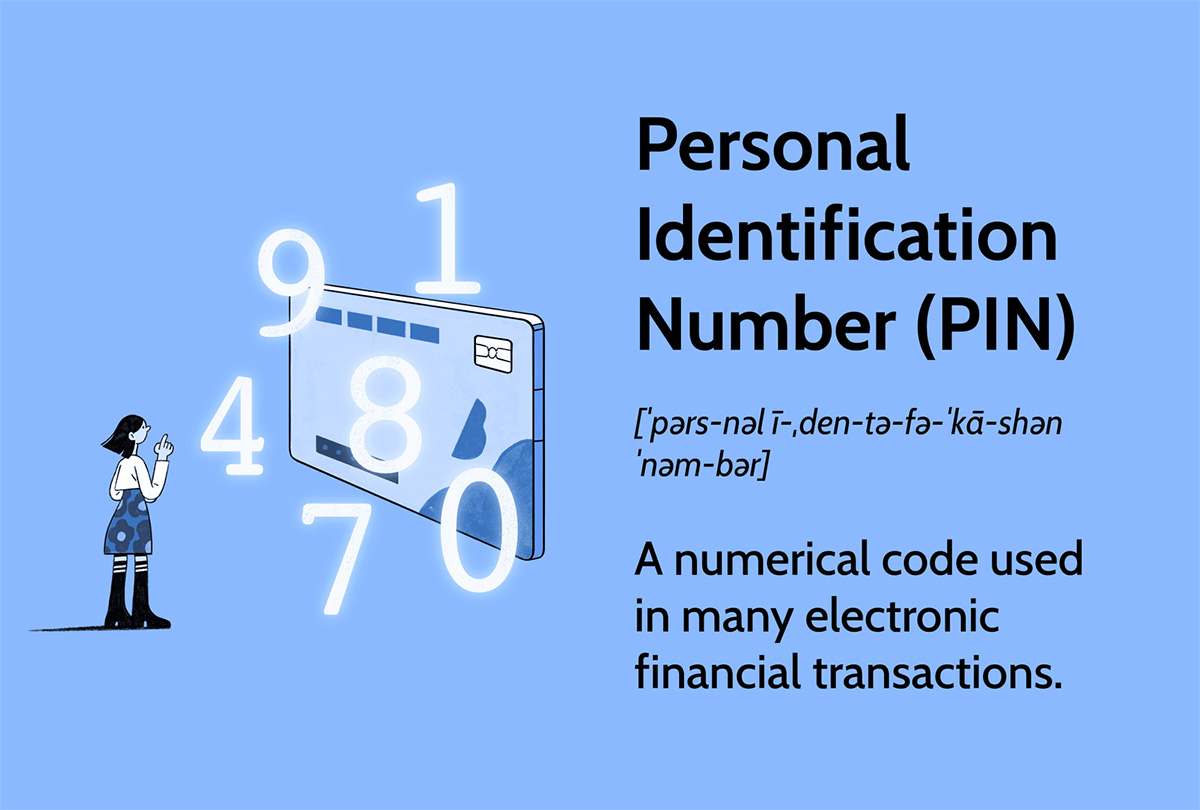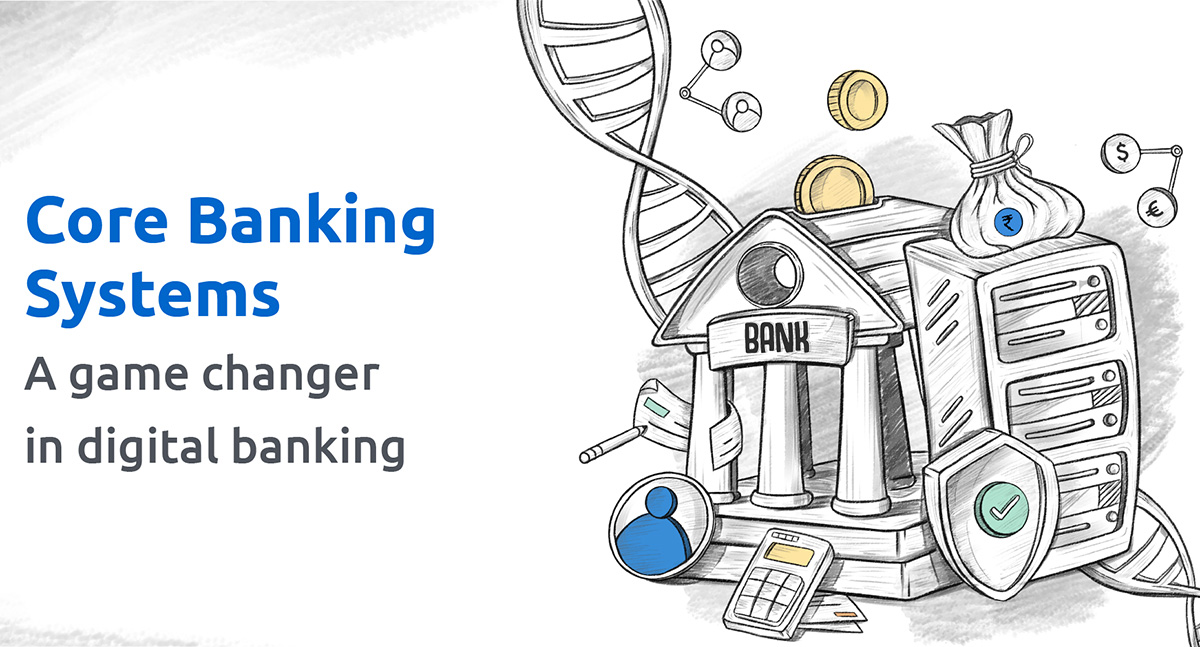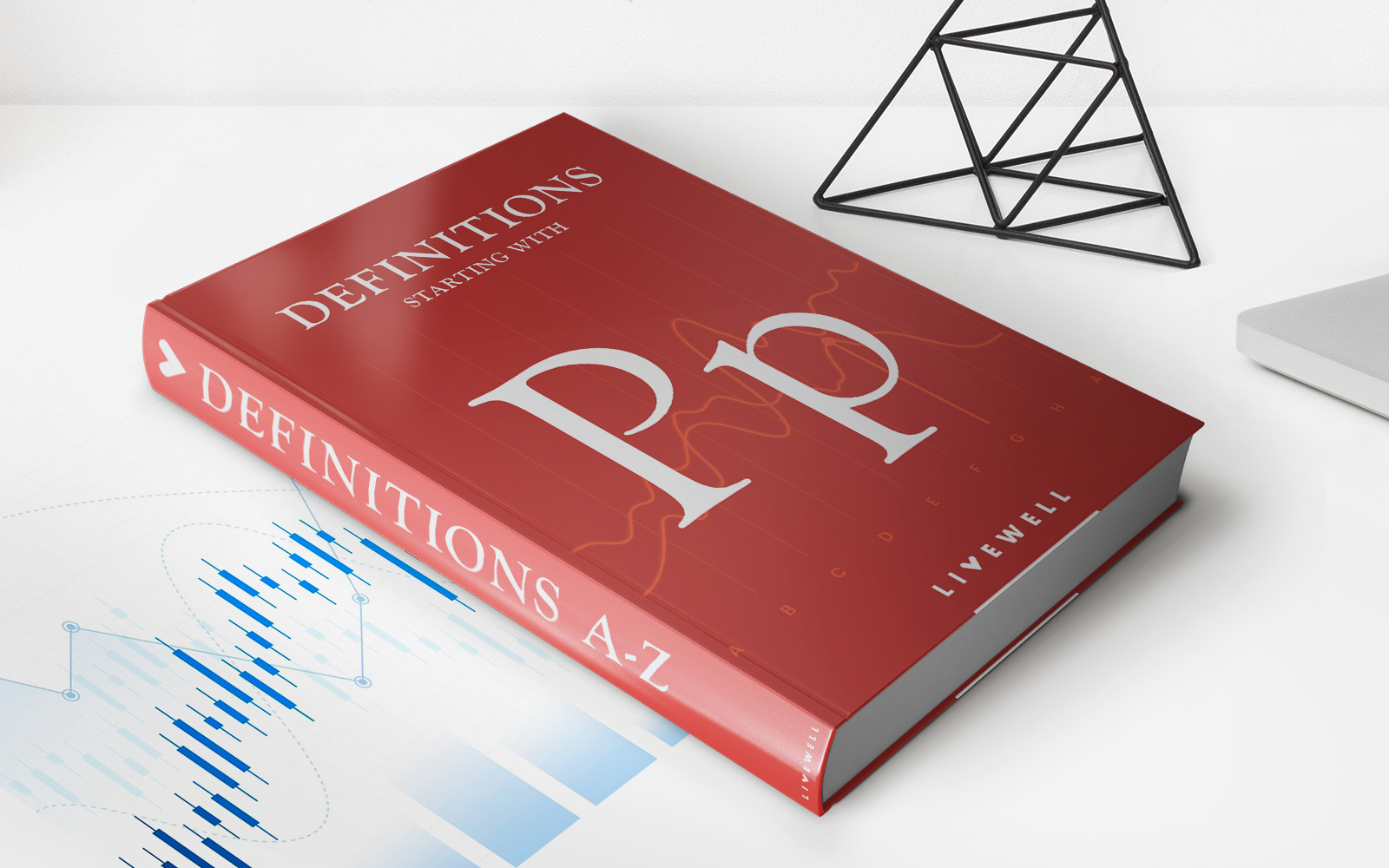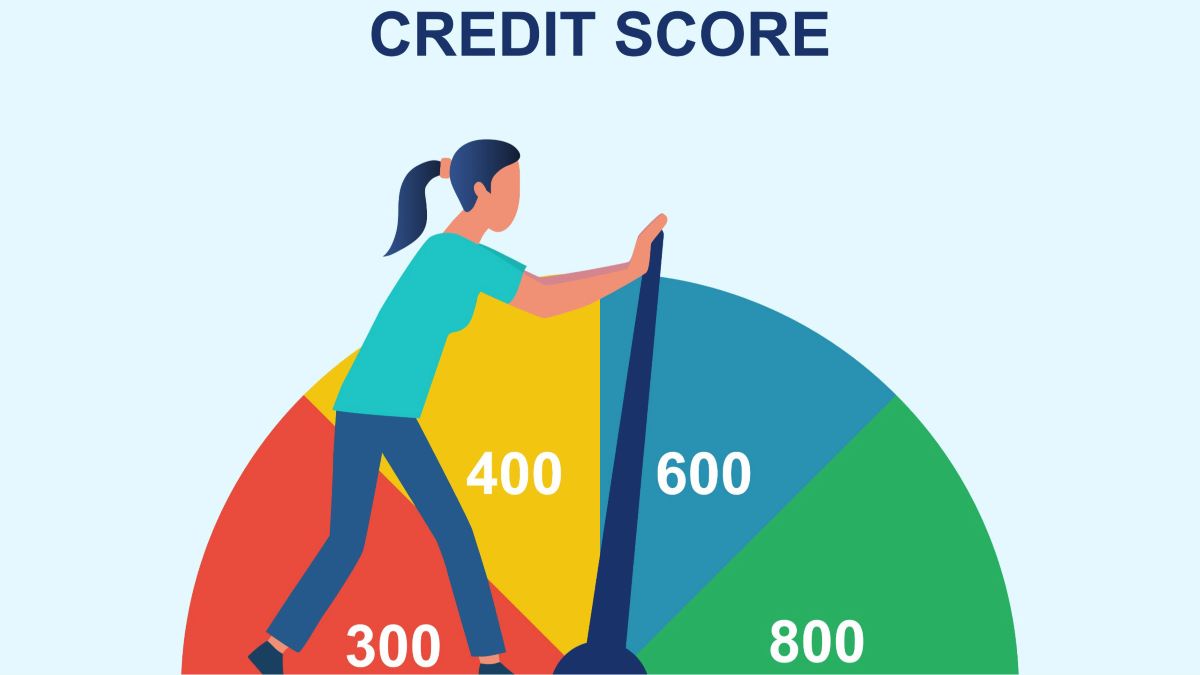

Finance
How To Stop Prescreened Offers Of Credit
Published: January 5, 2024
Want to stop those annoying prescreened credit offers? Discover effective ways to put an end to them and take control of your finances.
(Many of the links in this article redirect to a specific reviewed product. Your purchase of these products through affiliate links helps to generate commission for LiveWell, at no extra cost. Learn more)
Table of Contents
- Introduction
- What are Prescreened Offers of Credit?
- Why do you receive Prescreened Offers of Credit?
- Effects of Prescreened Offers of Credit
- How to Opt-Out of Prescreened Offers of Credit
- Step 1: Opt-Out through the Mailing Preference Service
- Step 2: Opt-Out through OptOutPrescreen.com
- Step 3: Opt-Out by Phone
- Step 4: Opt-Out through the Credit Reporting Companies
- Benefits of Opting Out of Prescreened Offers of Credit
- Things to Consider Before Opting Out
- Conclusion
Introduction
Have you ever opened your mailbox to find a flood of prescreened offers of credit? It’s a common occurrence for many individuals, and while it may seem like a convenient way to access credit options, it can also be overwhelming and potentially lead to unwanted financial consequences. In this article, we will explore what prescreened offers of credit are, why you receive them, and most importantly, how to stop them.
Prescreened offers of credit refer to the pre-approved offers you receive in the mail, enticing you with attractive interest rates, rewards, and other benefits. These offers are based on your credit history and other personal information that credit card companies and lenders acquire from the three major credit reporting agencies: Experian, TransUnion, and Equifax. They use this information to assess your creditworthiness and to determine if you are a good fit for their credit products.
But why do you receive so many of these offers? Firstly, credit card companies and lenders are eager to acquire new customers and expand their customer base. By sending out prescreened offers of credit, they can reach a wider audience and increase the chances of attracting potential customers who may be looking for credit options.
Secondly, these offers are often a result of your credit profile meeting specific criteria set by the credit card companies and lenders. For example, if you have a good credit score and a solid repayment history, you are more likely to receive attractive prescreened offers of credit. On the other hand, if your credit profile does not meet the desired criteria, you may receive fewer or no prescreened offers.
While receiving these offers may seem harmless, there are some effects to consider. One of the main concerns is the potential impact on your credit score. Each time a lender or credit card company sends out a prescreened offer, it is considered a “soft inquiry” and does not affect your credit score. However, if you decide to accept the offer and proceed with the application, it becomes a “hard inquiry,” which can have a slight negative impact on your credit score.
Besides potential credit score impacts, prescreened offers of credit can also lead to impulsive spending and accumulating unnecessary debt. These offers are designed to entice you with attractive perks and benefits, tempting you to apply for more credit than you actually need. This can result in financial stress and difficulties in managing your debt effectively.
In the next sections, we will discuss how you can opt-out of prescreened offers of credit, the benefits of doing so, and what factors you should consider before making this decision. By taking control of your mailbox and managing the credit offers you receive, you can reduce unwanted clutter and make more informed decisions about your financial well-being.
What are Prescreened Offers of Credit?
Prescreened offers of credit, also known as pre-approved credit offers or prequalified offers, are unsolicited offers that credit card companies and lenders send to individuals based on their credit information. These offers are sent through the mail or email and are designed to entice recipients to apply for credit cards, loans, or other financial products.
Prescreened offers of credit are not randomly sent to everyone. They are targeted specifically to individuals who meet certain criteria set by the credit card companies and lenders. These criteria typically include factors such as credit score, income level, and overall creditworthiness.
When credit card companies and lenders decide to issue prescreened offers, they rely on information gathered from credit reporting agencies, such as Experian, TransUnion, and Equifax. These agencies collect and maintain data related to individuals’ credit history, including payment history, outstanding debts, and credit utilization.
Using this information, credit card companies and lenders identify individuals who may be suitable candidates for their financial products. They then send out prescreened offers of credit with enticing incentives like low-interest rates, rewards programs, or introductory offers.
It’s important to note that prescreened offers of credit are different from preapproved offers. While both types indicate that you meet the initial criteria set by the credit card companies and lenders, preapproved offers have a higher chance of actual credit approval upon application. Prescreened offers, on the other hand, are based on an initial assessment and still require a more thorough credit evaluation before final approval.
Prescreened offers of credit can come in various forms, including credit card applications, balance transfer offers, personal loan offers, and home equity loan offers. These offers often include a unique invitation or approval code that recipients can use to apply for the credit product online, over the phone, or by mailing in the application.
It’s important to carefully consider any prescreened offer of credit before accepting it. While it may seem convenient and tempting to take advantage of the pre-approval, it’s essential to evaluate the terms and conditions, interest rates, fees, and other associated costs. Taking the time to compare different offers and assessing your personal financial situation will help you make an informed decision that aligns with your financial goals.
Why do you receive Prescreened Offers of Credit?
If you’ve ever wondered why you receive prescreened offers of credit in your mailbox, it’s because credit card companies and lenders are actively seeking new customers and want to expand their customer base. These offers are a result of targeted marketing campaigns and the evaluation of your credit profile.
When credit card companies and lenders review your credit information, they assess various factors such as your credit score, payment history, income level, and debt-to-income ratio. Based on this evaluation, they determine whether you meet their criteria for potential customers.
If your credit profile aligns with the desired criteria, you are likely to receive more prescreened offers of credit. This is because credit card companies and lenders perceive you as a low-risk borrower who is more likely to pay back loans and credit card balances on time, thus generating interest income for them.
Some specific reasons why you receive prescreened offers of credit include:
- Strong credit history: If you have a solid credit history with a good credit score and a history of responsible borrowing and repayment, credit card companies and lenders see you as a reliable borrower. They are more likely to send you prescreened offers of credit as they believe you are more likely to be responsible with credit and payment obligations.
- High income level: A higher income level demonstrates your ability to repay debts and makes you an attractive candidate for credit card companies and lenders. They want customers who have the financial means to handle credit and make timely payments.
- Potential marketing partnerships: Credit card companies often partner with other organizations, such as airlines, retail stores, or financial institutions, to offer co-branded cards or affinity cards. If you frequently shop at these partnered businesses or have a relationship with them, you may receive prescreened offers of credit associated with those organizations.
- Recent credit inquiries: If you have recently applied for credit or loans, such as a mortgage or a car loan, it indicates that you may be actively seeking credit. Credit card companies and lenders may target you with prescreened offers of credit to capitalize on your potential need for additional credit options.
It’s important to note that receiving prescreened offers of credit does not guarantee acceptance or approval. These offers are based on an initial assessment of your credit profile and still require a more thorough evaluation when you actually decide to apply for the credit product.
If you do not wish to receive prescreened offers of credit, you have the option to opt-out. In the next section, we will explore the steps you can take to stop these offers from cluttering your mailbox and inbox.
Effects of Prescreened Offers of Credit
While prescreened offers of credit may seem harmless or even beneficial at first glance, they can have several effects on your financial well-being. It’s important to understand these effects and consider them before deciding whether to accept or opt-out of these offers.
1. Impact on your credit score: When credit card companies and lenders send you prescreened offers, it typically results in a “soft inquiry” on your credit report. Soft inquiries do not impact your credit score. However, if you decide to accept the offers and proceed with the application, it becomes a “hard inquiry,” which can slightly decrease your credit score. Multiple hard inquiries within a short period of time can have a cumulative negative impact on your creditworthiness.
2. Potential for impulsive spending: Prescreened offers of credit often come with enticing perks, rewards, or low introductory interest rates. While these offers can be tempting, they may also encourage impulsive spending. It’s important to carefully evaluate the terms and conditions of the offer and consider whether the credit product aligns with your financial goals and needs.
3. Accumulation of unnecessary debt: Accepting multiple prescreened offers of credit can lead to accumulating more debt than necessary. It’s easy to get caught up in the excitement of pre-approved credit, but it’s essential to only borrow what you need and can afford to repay. Taking on excessive debt can strain your finances and make it challenging to meet your financial obligations.
4. Increased risk of identity theft: Prescreened offers of credit contain personal information, such as your name and address. If these offers fall into the wrong hands, it can increase the risk of identity theft or fraud. Be cautious with how you handle and dispose of these offers to protect your sensitive information.
5. Clutter and overwhelm: Receiving a constant stream of prescreened offers of credit can clutter your mailbox and inbox, creating a sense of overwhelm. Sorting through these offers and deciding which ones to consider takes time and effort. By opting out of prescreened offers, you can reduce this clutter and focus on financial opportunities that align with your goals.
It’s important to weigh the benefits and disadvantages before deciding whether to accept or opt-out of prescreened offers of credit. Consider your current financial situation, your long-term financial goals, and your ability to carefully manage credit obligations. Exploring alternatives and researching different credit options can help you make informed decisions that align with your financial well-being.
In the next section, we will discuss the steps you can take to opt-out of prescreened offers of credit and regain control over the credit offers you receive.
How to Opt-Out of Prescreened Offers of Credit
If you’re tired of receiving prescreened offers of credit in your mailbox and want to reduce the clutter, you have the option to opt-out. Opting out means that credit card companies and lenders will no longer send you prescreened offers of credit. Here are several methods you can use to opt-out:
Step 1: Opt-Out through the Mailing Preference Service
The Mailing Preference Service is a free service in the United States that allows you to opt-out of receiving prescreened offers of credit and other unsolicited direct mail. You can register online at www.dmachoice.org, which is operated by the Direct Marketing Association, or by calling 1-888-5-OPT-OUT (1-888-567-8688).
Step 2: Opt-Out through OptOutPrescreen.com
Another method to opt-out is through OptOutPrescreen.com, the official Consumer Credit Reporting Industry website. This website provides an easy and convenient way to opt-out of prescreened offers of credit. You can choose to opt-out for a period of five years or permanently. To opt-out, visit www.optoutprescreen.com or call 1-888-5-OPT-OUT (1-888-567-8688).
Step 3: Opt-Out by Phone
Some credit reporting agencies also offer the option to opt-out of prescreened offers of credit by phone. You can contact each credit reporting agency directly to inquire about their opt-out process and provide the necessary information to stop receiving prescreened offers of credit.
Step 4: Opt-Out through the Credit Reporting Companies
Another option is to directly contact the three major credit reporting companies – Equifax, Experian, and TransUnion. You can request to be excluded from lists used for prescreened offers by contacting them individually. Be prepared to provide your personal information and follow their specific instructions to opt-out.
It’s important to note that it may take a few weeks for the opt-out process to take effect. During this time, you may still receive prescreened offers of credit. However, once the opt-out process is complete, you should experience a significant reduction in the number of prescreened offers you receive.
By opting out of prescreened offers of credit, you regain control over the credit offers you receive and can minimize unwanted clutter. However, it’s essential to consider the potential benefits and drawbacks of opting out, as discussed in the previous section, before making a decision. Opting out may limit your access to credit offers that could potentially be beneficial, so carefully evaluate your own financial needs and circumstances.
In the next section, we will explore the benefits of opting out of prescreened offers of credit and what factors you should consider before making this decision.
Step 1: Opt-Out through the Mailing Preference Service
The Mailing Preference Service (MPS) is a free service available in the United States that allows individuals to opt-out of receiving prescreened offers of credit and other unsolicited direct mail. By registering with the MPS, you can significantly reduce the amount of unwanted mail you receive, including credit card offers.
To opt-out through the Mailing Preference Service:
- Visit the official MPS website at www.dmachoice.org.
- Click on the “Register” or “Sign Up” button to create an account.
- Enter your personal information, including your name, address, and email address. Make sure to provide accurate and up-to-date information.
- Follow the instructions to complete the registration process. You may be required to verify your email address.
- Once registered, you can manage your preferences and choose the types of mail you want to opt-out of, including prescreened offers of credit.
- Review your selections and confirm your choices.
By opting-out through the Mailing Preference Service, you are requesting that credit card companies and other marketers remove your name and address from their mailing lists for prescreened credit offers. It may take a few weeks for the opt-out process to take effect, so you may continue to receive some prescreened offers during this time. However, the volume should significantly decrease once the opt-out process is complete.
It’s important to note that the Mailing Preference Service does not guarantee a complete cessation of all prescreened offers. Some financial institutions and lenders may still send offers, particularly if you have an existing relationship with them or if the offers are based on criteria other than prescreening, such as your existing credit cards or loans.
Opting out through the Mailing Preference Service is a proactive step in reducing the clutter of unwanted mail and taking control of the credit offers you receive. However, it’s essential to consider the potential benefits and drawbacks of opting out, as well as alternative options such as the Direct Marketing Association’s opt-out service discussed in the previous section.
In the next section, we will discuss additional steps you can take to opt-out of prescreened offers of credit and the benefits of doing so.
Step 2: Opt-Out through OptOutPrescreen.com
Another effective method to opt-out of prescreened offers of credit is through OptOutPrescreen.com. This website is the official Consumer Credit Reporting Industry website and provides a simple and convenient way to opt-out of receiving prescreened credit and insurance offers.
To opt-out through OptOutPrescreen.com, follow these steps:
- Visit the official website at www.optoutprescreen.com.
- Click on the “Opt-Out” link or button to begin the process.
- Choose whether you want to opt-out for a period of five years or permanently. Select the option that aligns with your preferences.
- Provide the required personal information, including your name, address, and social security number. This information is used to verify your identity and ensure accurate processing of your opt-out request.
- Submit your request and review the confirmation page that appears. It’s a good idea to save a copy or take a screenshot of the confirmation for your records.
Once your opt-out request is submitted, you will be removed from the prescreened credit and insurance offer lists used by Equifax, Experian, TransUnion, and Innovis, which are the major consumer credit reporting companies in the United States.
It’s important to note that the opt-out request may take a few weeks to be fully processed. During this time, you may still receive some prescreened offers. However, after the opt-out process is complete, the volume of prescreened offers of credit should noticeably decrease.
Opting out through OptOutPrescreen.com gives you more control over the credit offers you receive and reduces the amount of unwanted mail in your mailbox. However, it’s important to consider the potential effects and implications of opting out, as well as other factors such as your financial goals and needs.
In the next section, we will discuss additional steps you can take to opt-out of prescreened offers of credit, including opting out by phone and through the credit reporting companies.
Step 3: Opt-Out by Phone
If you prefer to opt-out of prescreened offers of credit by phone, you have the option to do so. By contacting the appropriate organizations and providing the necessary information, you can request to be excluded from the lists used for prescreened credit offers.
To opt-out by phone, follow these general steps:
- Gather the necessary information: Before making the call, ensure that you have the relevant personal information on hand. This may include your name, address, and Social Security number.
- Identify the credit reporting agencies: There are three major credit reporting agencies you should contact individually – Equifax, Experian, and TransUnion. You may also consider contacting Innovis, a fourth consumer credit reporting company.
- Find the contact information: Visit the websites of the credit reporting agencies or search online to find the appropriate phone numbers for their opt-out departments.
- Call the opt-out departments: Use the provided phone numbers to call the respective credit reporting agencies’ opt-out departments. Follow the prompts or speak to a representative to begin the opt-out process.
- Provide the required information: Be prepared to provide the requested personal information, such as your name, address, and Social Security number. This information is essential to verify your identity and complete the opt-out request.
- Follow any additional instructions: The credit reporting agency may require you to take further steps or provide additional information to complete the opt-out process. Make sure to carefully follow their instructions.
- Confirm the opt-out request: Once the call is completed, ask for confirmation that your opt-out request has been processed successfully. Take note of any reference numbers or details provided for your records.
By opting-out by phone, you can communicate directly with the credit reporting agencies responsible for generating the prescreened offers of credit. This method allows you to have a more immediate conversation and receive real-time confirmation of your opt-out request.
Remember that it may take some time for the opt-out request to be fully processed and for the prescreened offers to stop. Be patient and continue to monitor your mailbox for any changes in the volume of offers you receive.
In the next section, we will explore the option of opting out through the credit reporting companies and the benefits of taking this step.
Step 4: Opt-Out through the Credit Reporting Companies
In addition to the Mailing Preference Service and OptOutPrescreen.com, another method to opt-out of prescreened offers of credit is by contacting the credit reporting companies directly. By requesting to be excluded from their lists used for prescreened credit offers, you can reduce the amount of unsolicited credit offers you receive.
To opt-out through the credit reporting companies, follow these general steps:
- Identify the credit reporting agencies: The major credit reporting agencies are Equifax, Experian, and TransUnion. Additionally, you may consider contacting Innovis, which is a fourth consumer credit reporting company.
- Find the contact information: Visit the websites of the credit reporting agencies or search online to find the appropriate phone numbers or mailing addresses for their opt-out departments. You may also find the opt-out forms available for download.
- Choose the desired opt-out method: Credit reporting agencies may provide options for opting out by phone, online, or through traditional mail. Decide which method suits your preferences and follow the corresponding instructions.
- Provide the necessary information: Be prepared to provide your personal details, such as your name, address, and Social Security number, to verify your identity and ensure accurate processing of your opt-out request.
- Submit the opt-out request: Follow the provided instructions to submit your opt-out request to each credit reporting agency. If opting out by mail, make sure to enclose the required documents or forms, including any supporting identification.
- Keep record of your opt-out requests: Make copies of the documents or forms you submit and note down any confirmation numbers or details provided. This will serve as proof that you have requested to opt-out of prescreened offers of credit.
Opting out through the credit reporting companies directly ensures that your request is communicated to the entities responsible for generating the prescreened credit offers. It adds an additional layer of control over the offers you receive in the future.
Remember that it may take some time for the opt-out requests to be processed and for the prescreened offers to stop. Be patient and monitor your mailbox for any changes in the volume of offers you receive.
In the next section, we will discuss the benefits of opting out of prescreened offers of credit and what factors you should consider before making this decision.
Benefits of Opting Out of Prescreened Offers of Credit
Opting out of prescreened offers of credit can provide several benefits that can positively impact your financial well-being. By taking control of the credit offers you receive, you can experience the following advantages:
1. Reduced Clutter and Time Savings: By opting out, you can significantly reduce the amount of unwanted mail in your mailbox. This means less time spent sorting through offers and less clutter to deal with. It frees up your time and energy to focus on more important financial matters.
2. Minimized Impulsive Spending: Prescreened offers of credit often come with attractive perks and rewards, enticing you to apply for credit you may not necessarily need. By opting out, you can avoid the temptation and reduce impulsive spending. This enables you to make more deliberate and thoughtful financial decisions.
3. Reduced Risk of Identity Theft: Prescreened offers of credit often contain personal information, making them potentially appealing to identity thieves. By opting out, you lower the chances of your personal data falling into the wrong hands and reduce the risk of identity theft.
4. Protection of Credit Score: Accepting prescreened offers of credit can result in hard inquiries on your credit report, which can slightly lower your credit score. Opting out helps minimize the number of hard inquiries and protects the integrity of your credit score, making it easier to maintain or improve your creditworthiness.
5. Improved Financial Decision-Making: By opting out and reducing the influx of prescreened offers, you can take a more deliberate approach to your financial decisions. You can carefully consider your financial goals, evaluate various credit products without feeling pressured, and choose options that align with your needs and financial well-being.
6. Enhanced Privacy: Opting out gives you greater privacy control over the personal data shared with credit card companies and lenders. It allows you to limit the distribution of your personal information and reduces the risk of it being used for unsolicited offers.
It’s important to note that while opting out of prescreened offers of credit can provide these benefits, it may also limit access to potential credit opportunities tailored specifically to your credit profile. Therefore, carefully consider your financial goals, needs, and preferences before making the decision to opt-out.
By opting out, you regain control over the credit offers you receive and create a more intentional approach to managing your financial well-being. It aligns with the principle of being proactive in your financial decisions and can contribute to a healthier financial future.
In the next section, we will explore key factors to consider before making the decision to opt-out of prescreened offers of credit.
Things to Consider Before Opting Out
Before deciding to opt-out of prescreened offers of credit, it’s important to consider a few key factors that can help you make an informed decision. While opting out can have its benefits, it’s essential to weigh the potential drawbacks and assess your own financial needs and goals. Here are some factors to consider:
1. Credit Access: Opting out of prescreened offers may limit your access to potential credit opportunities tailored to your credit profile. If you anticipate needing credit in the near future, such as for a mortgage or car loan, it might be worth evaluating whether opting out aligns with your credit needs.
2. Rewards and Benefits: Prescreened offers of credit often come with attractive perks, rewards, and introductory interest rates. Before opting out, consider whether you are willing to forego these potential benefits. Assess whether the value of the perks outweighs the potential negative effects and clutter associated with prescreened offers.
3. Financial Discipline: If you have a strong financial discipline and can resist the temptation to apply for credit impulsively, prescreened offers may have minimal impact on your financial well-being. However, if you find yourself easily swayed by enticing offers, opting out might help you maintain better control over your finances and avoid unnecessary debt.
4. Credit Monitoring: Prescreened offers can serve as a reminder to continuously monitor your credit profile. If you receive prescreened offers, it means that you are being regularly evaluated and deemed creditworthy. This can be helpful in keeping an eye on any changes or discrepancies in your credit report and ensuring its accuracy.
5. Alternative Methods for Offers: Consider exploring alternative ways to access credit offers that are tailored to your needs. Research online or contact credit card issuers directly to inquire about their available credit products. This way, you can be proactive in seeking out credit options that align with your preferences instead of relying solely on prescreened offers.
6. Opt-Out Periods: Keep in mind that when opting out, you typically have the option to choose between a five-year opt-out period or a permanent opt-out. Consider your personal financial circumstances and how long you want to be excluded from prescreened offers. Permanent opt-outs may reduce future credit opportunities, so weigh the pros and cons carefully.
7. Opt-Out Methods: Different opt-out methods exist, such as through the Mailing Preference Service, OptOutPrescreen.com, or directly contacting the credit reporting companies. Research the pros and cons of each method, their effectiveness, and the convenience of the process before choosing the best option for you.
Ultimately, the decision to opt-out of prescreened offers of credit depends on your individual financial situation, goals, and preferences. Carefully consider the potential benefits and drawbacks, and evaluate whether this step aligns with your long-term financial objectives.
In the concluding section, we will summarize the key points discussed and emphasize the importance of making an informed decision tailored to your financial needs.
Conclusion
Prescreened offers of credit can be both convenient and overwhelming. While they provide you with pre-approved credit options, they can also lead to impulsive spending and clutter your mailbox. Opting out of prescreened offers gives you control over the credit offers you receive and allows you to make more intentional financial decisions.
Throughout this article, we discussed various aspects of prescreened offers of credit, including what they are, why you receive them, and their potential effects. We also provided step-by-step instructions for opting out through the Mailing Preference Service, OptOutPrescreen.com, phone, and contacting the credit reporting companies directly. Additionally, we highlighted the benefits of opting out, such as reduced clutter, minimized impulsive spending, and improved privacy and credit score protection.
Before deciding to opt-out, it’s crucial to consider factors such as your credit access needs, the potential rewards and benefits you may be foregoing, your financial discipline, and alternative methods for accessing credit offers. By carefully weighing these factors, you can make an informed decision that aligns with your individual financial goals and circumstances.
Remember, opting out of prescreened offers of credit does not eliminate your ability to seek credit when needed. It simply allows you to be proactive and deliberate in choosing credit options that best suit your needs. Regularly monitoring your credit profile, researching credit products, and maintaining good financial habits are key components of a healthy financial life.
Ultimately, the choice to opt-out of prescreened offers of credit is a personal one that depends on your unique financial situation and goals. By taking control of the credit offers you receive, you can create a more intentional and organized approach to managing your finances.
As you navigate your financial journey, remember to stay informed about your options, regularly review your credit report, and make financial decisions that support your long-term goals. By doing so, you can achieve greater financial stability and make choices that align with your personal aspirations.






